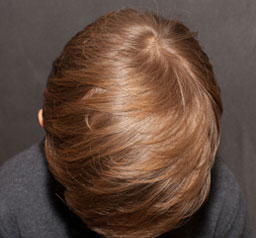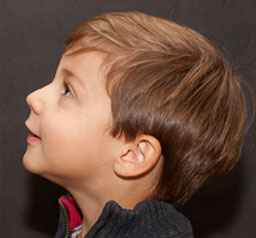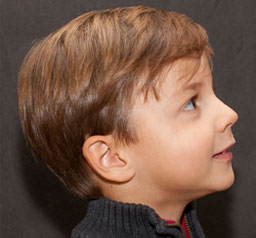When it comes to skull deformities, there are a lot of terms floating around. Plagiocephaly and craniosynostosis are two joint cranial deformities. Plagiocephaly and craniosynostosis are two conditions that can affect the shape of a baby’s head. Plagiocephaly, also known as “flat head syndrome,” occurs when a baby’s head has a flattened area. Craniosynostosis happens when the bones in a baby’s skull fuse too early. Both conditions can cause your baby to have an abnormal head shape. Let’s take a closer look at the difference between these two conditions.

Plagiocephaly is a condition that can cause your baby’s head to have a flattened area. This can happen if your baby sleeps in the same position all the time, such as on their back. Plagiocephaly can also occur if your baby was born prematurely or has torticollis(abnormal posture), which is when the muscles in the neck are tight. Plagiocephaly is usually benign and doesn’t require treatment. Sometimes, your baby may need to wear a special helmet to help shape their head back to normal.
Craniosynostosis happens when the bones in your baby’s skull fuse too early. This prevents your baby’s brain from growing properly, which can cause your child to have an abnormal head shape. Craniosynostosis is a severe condition that requires treatment with surgery. Surgery is typically done within the first few months of life to allow for proper brain growth.
Craniosynostosis and Plagiocephaly are two conditions that can affect the development of a baby’s skull. Craniosynostosis is a condition in which the bones of the skull fuse too soon, resulting in an abnormal head shape. Plagiocephaly is a condition in which the head has an asymmetrical shape due to an abnormality in the growth of the bones of the skull. Both conditions can cause problems with brain development and lead to developmental delays. Symptoms of craniosynostosis include an abnormal head shape, seizures, sleep apnea, crossed eyes, and developmental delays. Symptoms of Plagiocephaly include an asymmetrical head shape, flattening of one side of the head, and facial asymmetry.
Craniosynostosis and Plagiocephaly are both treatable conditions. Craniosynostosis is a birth defect in which the bones in the skull fuse too early. This can cause problems with brain development and lead to a misshapen head.
Plagiocephaly, often referred to as “flat head syndrome,” is a condition in which the infant’s head is flattened on one side. This can occur because of positioning in the womb or pressure on the head after birth. Both conditions can be treated with surgery. The type of plagiocephaly treatment that is right for your baby will depend on the severity of your baby’s Plagiocephaly. Your doctor will work with you to develop a plagiocephaly treatment plan for your baby. Also, Plagiocephaly is a condition that various factors, including trauma to the head, tumors, and developmental disorders, can cause. Treatment for Plagiocephaly will depend on the underlying cause.
Also Check – WHEN IS IT NECESSARY TO SEEK MEDICAL CARE FOR THE NEWBORN’S HEAD SHAPE?
In some cases, Plagiocephaly can be treated with surgery. However, Plagiocephaly is not always treatable and may require lifelong management. If you have Plagiocephaly, your doctor will work with you to develop a treatment plan.
In craniosynostosis, the surgeon will make an incision in the scalp and then carefully separate the fused bones. In Plagiocephaly, the surgeon will reshape the skull and remove any areas of bone pressing on the brain. After surgery, infants typically have a full recovery and go on to live healthy lives. Craniosynostosis treatment is generally performed when babies are between four and six months old. The goal of surgery is to release the fused sutures and allow the bones of the skull to grow normally. Surgery for craniosynostosis is complex, and it is essential to choose a pediatric surgeon with experience performing this type of surgery.
Your child’s health is our top priority. We strive to provide compassionate, personalized care that meets the needs of every patient we serve! If you are looking for treatment options in Plagiocephaly and Craniosynostosis then look no further than NJ Craniofacial Center – home of best-in-class surgical techniques on this cutting edge subject matter expert doctors who use them too ensure your little one receives only excellent service from us
We understand how difficult it can be when faced with deciding whether or not something should happen, but rest assured knowing all opinions will change if there isn’t
The major differences between craniosynostosis and deformational plagiocephaly are as follows:
| Craniosynostosis | Plagiocephaly | |
| Head shape: | asymmetrical head | asymmetrical head |
| Results from: | internal events | external molding |
| Fusion of cranial Sutures: | Premature fusion of cranial suture(s) | Normal cranial sutures |
| Diagnosis: | Made with X-rays and CT scans | Usually made without x-rays and other imaging studies |
| Treatment: | Surgery | Positioning and/or helmets |
| Causes: | Unknown | May include back sleeping*, restrictive intrauterine environment, muscular torticollis, premature birth |
*Back sleeping is essential for your child’s safety. Do not put your child’s sleep on hold. Consult a craniofacial surgeon for treatment to help with Plagiocephaly.



Conclusion: Plagiocephaly and craniosynostosis are two different conditions that can cause abnormal head shapes. Plagiocephaly is typically caused by positioning in the womb or during infancy, while craniosynostosis is caused by early fusion of the skull bones. Craniosynostosis is more severe than Plagiocephaly because it can lead to problems with brain development. If you think your child may have either condition, it is essential to consult a doctor for a proper diagnosis.
To schedule a private consultation with NJ Craniofacial Center, please call our office or request an appointment online. We look forward to your visit.
131 Madison Avenue, Third Floor, Morristown, NJ 07960